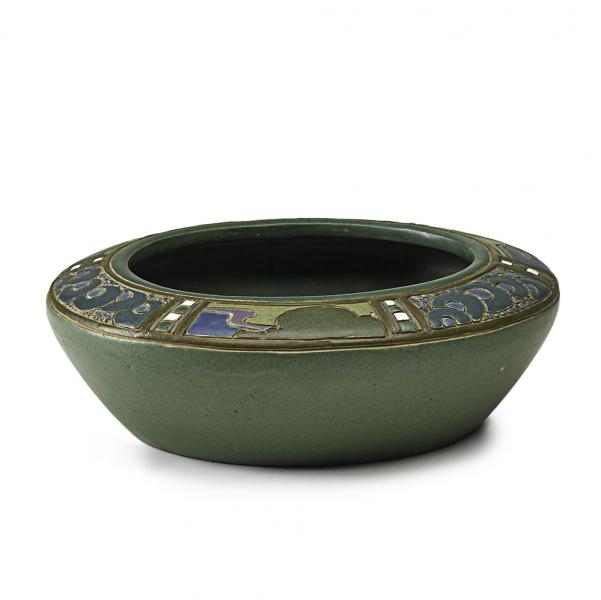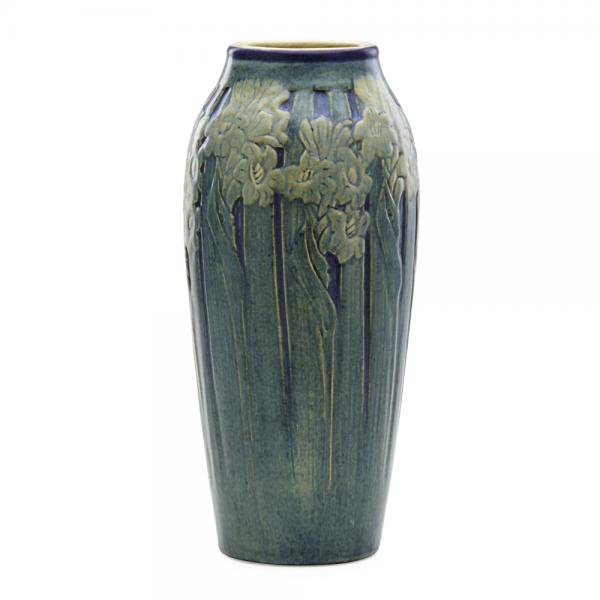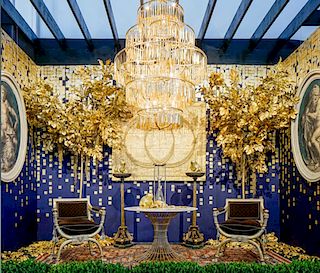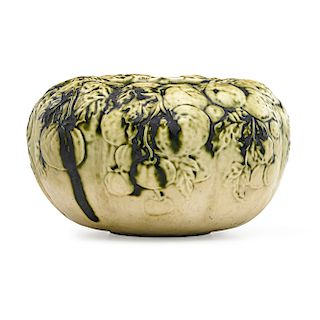Understanding the Value of Glass and Pottery Bowls
My previous blog post: “Why Do Vases Sell for More Money than Bowls” may well have left you with the impression that all vases are good and all bowls are bad (at least when it comes to monetary value). As with nearly everything in life of course there are exceptions to the rule that vases are worth more than bowls. Lets take a closer look at the nuances that cause some pottery or glass objects to be more valuable than others.
Bowls are usually wider than they are tall and broader at the top than at the bottom. If the opposite were true wed call the object a vase. But some objects don’t follow the traditional bowl shape, and these may be more valuable. Bowls that do have the typical form, but stand out thanks to decorations by a master designer, may also be quite valuable.
A closed bowl describes a form that is wider than tall but turns inward at its highest point and comes back to the center, sometimes leaving only a narrow center opening. Closed bowls can be short and squat or broad and bulbous, though we have to be careful about crossing the line from closed bowl to bulbous vase. A closed bowl may have a flat top or a sharp curve that leads back to center.

Why is a closed bowl usually more valuable than a more traditional open one? Such forms in and of themselves are usually more attractive than a standard bowl shape. You could even call them sexy! Closed bowls are also more difficult to find. Furthermore, decoration on a typical low bowl may be hard to read because of the angle and limited lighting. But with a closed bowl form, the decoration often adorns the top of the piece where it is even easier to see than on most vases.
In the hands of a master, even a stunted form like an open, low bowl can be used imaginatively. Frederich Rhead seemed to welcome the challenge of a difficult shape and some of the best bowls Ive seen were designed and decorated by him. I know of several vessels by Frederich Rhead from the Arequipa Pottery in Fairfax, California, where the interior of the bowl bore the decoration, showing off the work splendidly. The solution seems so simple that I’ve often wondered why more artists didnt follow his lead.

Some vase forms also serve as a poor foundation for decoration, especially if the artist hasnt used the restrictions of the shape creatively. For example, Newcomb College pots are all hand thrown, each one a singular creation from the potters wheel. However, the firm’s style forms a predictable design vernacular even a moderately informed eye can discern. For decades, they produced many tall, attenuated vases, usually about 4" in height for every inch in width, with decorations ranging from jonquils to landscapes. Elongated flowers are a very good fit for that shape because you can see an entire flower from nearly every angle. But many of the horizontal landscapes that Ive seen on that very same vase shape are unsatisfying, offering only a snapshot of the totality of the design.

All collectors ultimately decide for themselves what they like and how much they can afford to spend. The auction houses on this site have combined their sales archives, in part so that our viewers can scan through thousands of images and train their eyes. Which pieces do you think make the best use of the bowl form? Would you prefer a bowl of similar design by the same artist for half the price, or would you rather spend the extra money on a vase? Please post your questions. We’re here to answer all we can.
- Artist Spotlight: David Gerstein, Sculptural Pop in Bold Color & Motion
- The History of Rolex Watches: Innovation, Precision, and Enduring Prestige
- Preview the December Doyle+Design Auction: A Celebration of Modern & Contemporary Mastery
- Billings Winter Design 2025: A Celebration of Modern Mastery Across Eras
- The Ultimate Holiday Gift Guide: Luxe Finds From Bidsquare’s Finest Auctions
- Fine & Antique Jewelry Sale: A Curated Journey Through Craftsmanship & Design
- Upcoming Auction Spotlight: Doyle’s Fine Art: 19th Century & Early Modernism
- Entertain with Style This Holiday Season: Highlights from Doyle’s December 8 Auction
- Six Standout Lots from Newel’s Fine Jewelry, Timepieces & Luxury Handbags Sale
- Artist Spotlight: Roy Lichtenstein, Pop Art’s Master of Bold Lines & Bigger Ideas



 EUR
EUR CAD
CAD AUD
AUD GBP
GBP MXN
MXN HKD
HKD CNY
CNY MYR
MYR SEK
SEK SGD
SGD CHF
CHF THB
THB









